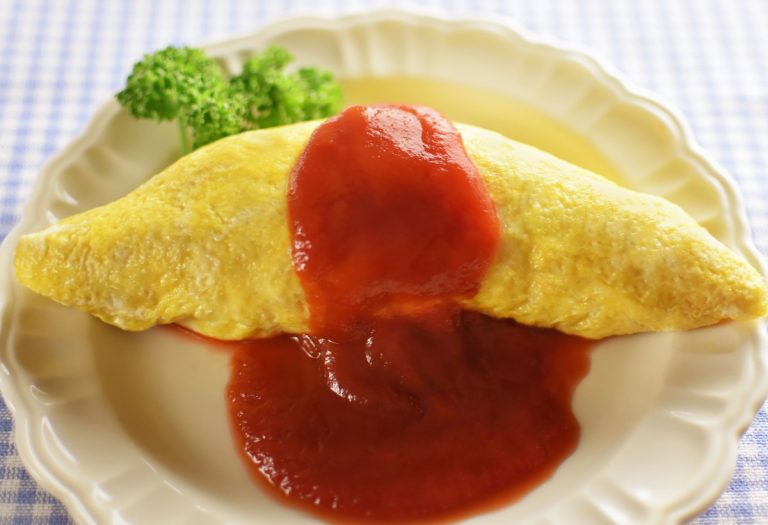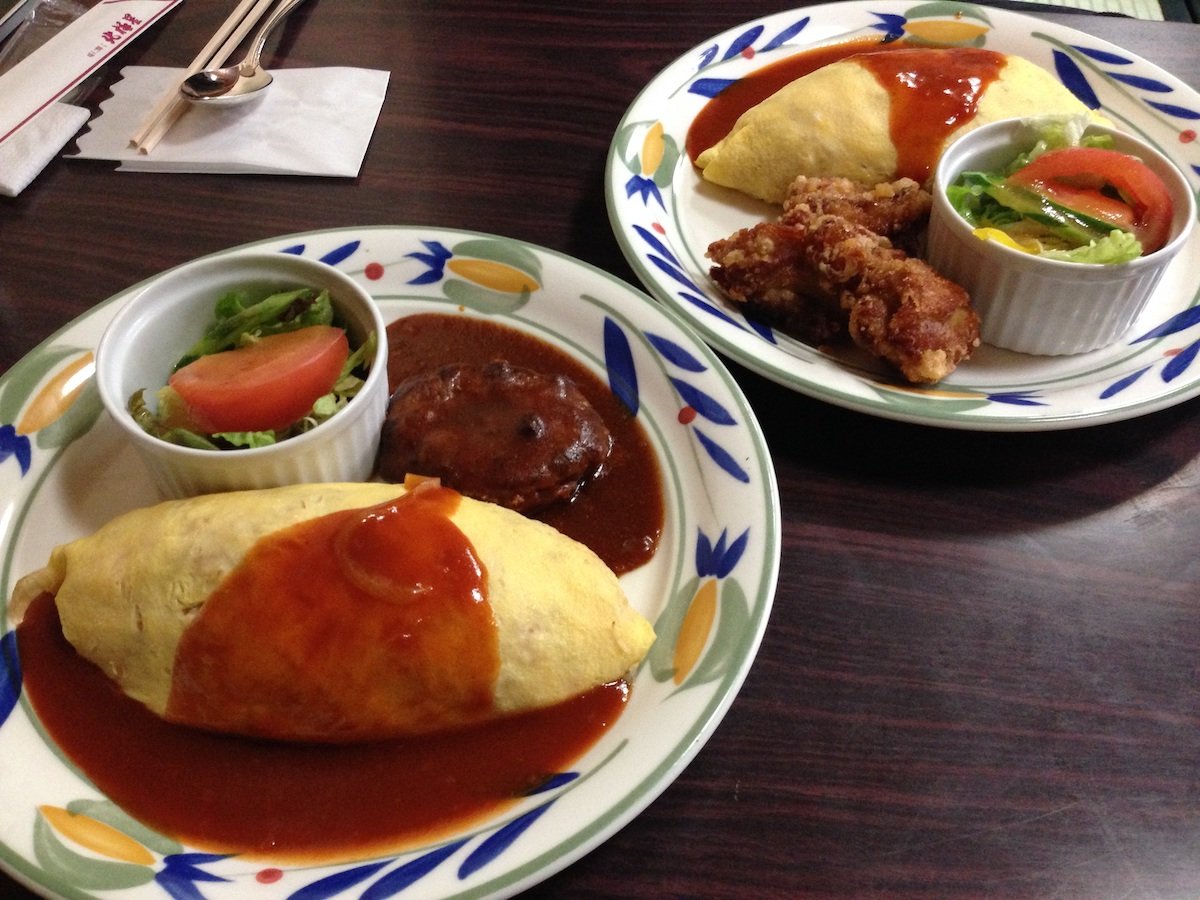
Omuraisu may sound simple, after all, its name is almost a perfect explanation of how simple it is to make: take some flavored rice (usually チキンライス, rice pan-fried with ketchup and chicken) put an omelet on top and serve. Even the most common variations are pretty tame with simple toppings like ketchup and white sauce preferred to more complicated ones.
What could be more simple? However, while the dish itself is simple, it is actually a good way to look at some interesting aspects of the Japanese psyche such as:
Youshoku- Western food in Japan
Omuraisu Japanese comes from the Japanese 洋食 tradition. Youshoku is made up of the Chinese characters 洋 (you; meaning the West) and 食 (shoku; eat or food). As the characters suggest, 洋食 are Japanese versions of ‘Western’ foods.
An important concept here is definitely ‘Japanese versions,’ as some of these dishes would be unrecognizable to Western people, such as 肉じゃが (soy sauce-flavored meat and potato stew), and others, such as カレーうどん (Indian-style curried udon noodles), would likely be considered unusual to most Western people.
In keeping with this tradition, Japanese chefs love to put their own unique spin on classic western dishes. Donuts with bean paste instead of jam, pizza slathered with lashings of mayonnaise, and crispy bread with curry in its center are all common versions of classic 洋食 dishes.
Omuraisu is part of this tradition, as while its main ingredient, omelet, is something that likely originated in France, Japanese cooks took this simple idea and combined it into a rice dish that is definitely uniquely Japanese.

Omuraisu and the Japanese love of creating compound words
Secondly, オムライス comes from a tradition of creating compound words in Japan. Japan is famous for taking two existing words and mashing them together to create a unique word. The general rule is that you take the first syllable or so of each word and put them together. So, personal computer becomes パソコン, air conditioner becomes エアコン, an animation’s song becomes アニソン, and, of course, an omelet with rice becomes オムライス.
Interestingly, オムライス isn’t the only food that has been abbreviated like this. Other common foods include ミックスサンド (a plate with sandwiches with various different fillings) and ハンバーグ (hamburger or Hamburg steak).
The art of omuraisu
Of course, whenever there is a material to do something artistic with, Japan will take advantage to create something far more artistic than its medium deserves. Drawing faces on the omurice with the sauce, fashioning the rice into a head laying between sheets made of omelette, and even making one into the head of a Pokemon-anime character are all common variants.
Regional variations
With each region having its own culinary speciality, it is not surprising that a lot of chefs enjoy adding some local flavors and character to the オムライス. オムそば, which mixes soba noodles and omelet together, and オムライスドリア attempts a triple header of mixing French omelet and Swiss doria together with rice for a Eurpoean tour of culinary influence.
Similarly, influences from other countries, are common. The Okinawan version タコオムライス or オムタコ, mixes the オムライス with タコライス (rice with taco-style meat) to create a tasty mashup. Similarly, カレーオムライス is becoming increasingly common as an Indian-inspired, French-inspired mashup. Hashed beef (はやし, hayashi; a dish made of beef with mushrooms and onion covered with a thick demi-glace sauce) with オムライス is also popular throughout Japan.
Omuraisu
Even this simple dish has far more to it than many would probably think. Like most Japanese cooking, something really simple is converted into something complicated and delicious. Japanese cuisine and even the culture as a whole is famous for this kind of thing, incorporating many different influences and creating something completely unique. So the next time you are about to tuck into an オムライス, pause to consider that such a basic dish is a microcosm of the Japanese world.















